Milk Glass Beach Glass
Milk Glass Beach Glass - What is it? What does it look like? Does it have any value? See information...
Submitted Pages and Photos of Milk Glass
Click or tap on the photo to see the original submission page:
Colors of Milk Glass
In the Victorian era (approximately 1840-1900) an opaque white glass became extremely popular because of its similar appearance to the more expensive porcelain.
It became know as "milk glass," a term which then extended to all the colors of opaque glass - which came in quite a variety.
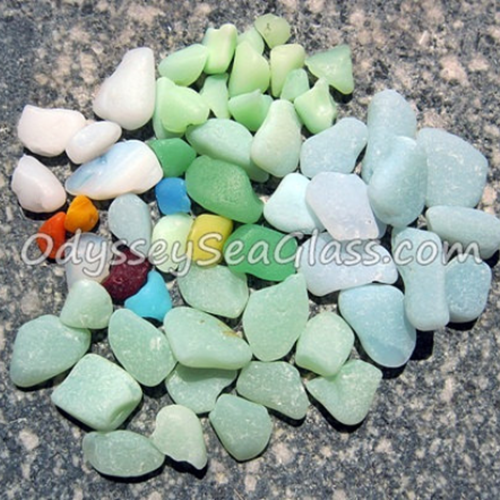
Milk glass colors have included white, pink, yellow, blue, blue-green, brown and other colors.
After World War ll, there was a big resurgence in popularity and companies such as Anchor Hocking, Fenton, and Westmoreland produced massive quantities of these attractive glassware colors.
During the 1960s one of the most beloved and well know milk glass - hobnail glass - became extremely popular and still can be seen adorning many shelves around the world. (4)
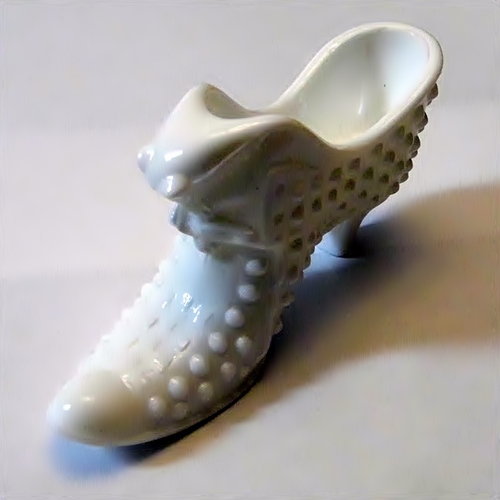 Hobnail Milk Glass Cat Shoe
Hobnail Milk Glass Cat ShoeIdentifying Milk Glass
The website Our Pastimes (1) says:
"Identifying a piece of glass as white used to be the best way to categorize milk glass. However, not all white glass is milk glass. The term now applies to colors with an underlying milky or opalescent presence.
"(you could) find books and venture online to look at pieces and compare them. There are few differences between regular white glass and milk glass; identification may be difficult."
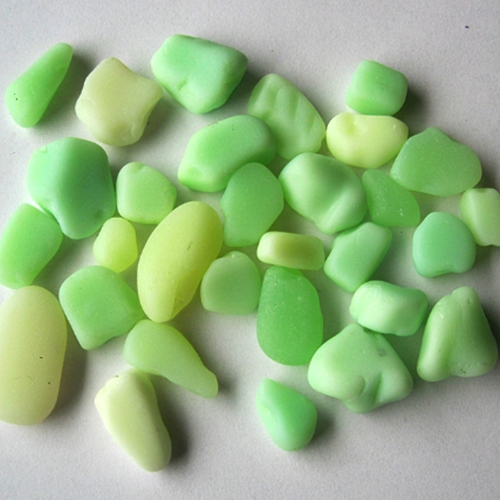 Jadeite is Greenish or Blue-green Milk Glass
Jadeite is Greenish or Blue-green Milk GlassFor all practical purposes for us seaglassers, though, any tumbled and frosted true glass that is opaque or transluscent is generally termed milk glass.
What is the value of beachfind milk glass? To find pricing, search online for reputable sea glass sellers and compare prices, quantity and quality with the pieces you have.
History and Info
Milk glass has been generally used to describe white glass in general, but the terms are really not the same.
Although the term "milk glass" was coined to describe the milky opaque look of the most common milk glass, ever since its origin this type of glass has included a variety of colors.
A definition of milk glass in modern times would be opaque or
translucent, milk white or colored glass.
Milk glass, like other glass, is used for bottles, dishware and
decorative purposes much as other glass is used.
Other
names applied to this type of glass are "opal glass" and "jadite"
(blue-green milk glass) or just plain "opaque glass." (3)
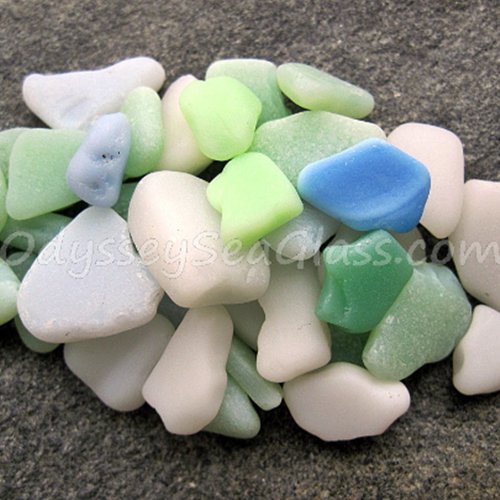 Milk Glass is Opaque or Translucent, Milk- white or Colored Glass
Milk Glass is Opaque or Translucent, Milk- white or Colored GlassMilk glass was originally manufactured in the Republic of
Venice in the 1600s in what is now northeastern Italy.
Made into decorative dinnerware,
lamps, vases, and costume jewelry, milk glass was highly popular during
the last part of the 19th century. Pieces made for the wealthy during
that time are known for their delicacy and beauty in color and design,
while Depression
glass pieces of the 1930s and 1940s are less so. (2)
References and Notes
3. Note: The word "jadeite" is sometimes interchanged with "jadite." However, jadeite is a rare form of jade, a classified mineral.
General Pictures of Sea Glass
Enter the following information and you're set to go.
What Other Visitors Have Said
Click below to see contributions from other visitors to this page...
12-04-13 Huanchaco Beach Peru Beach Finds
~ submitted by David and Lin of OdysseySeaGlass.com in Huanchaco, Peru Lin and I have come across these interesting finds off an on while beachcombing. …
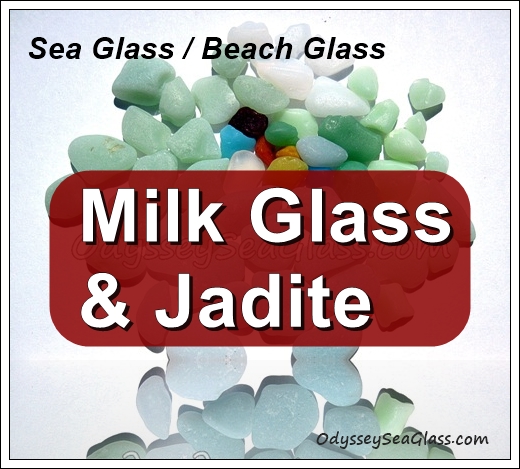
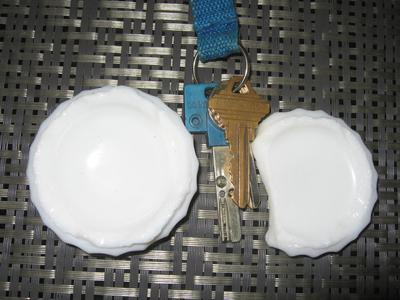
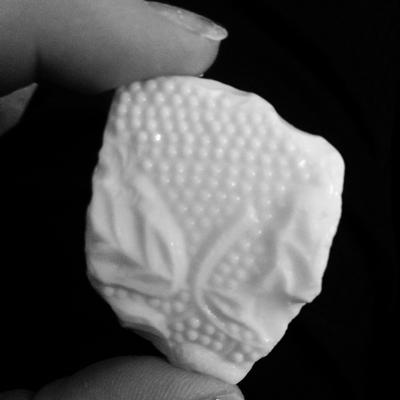
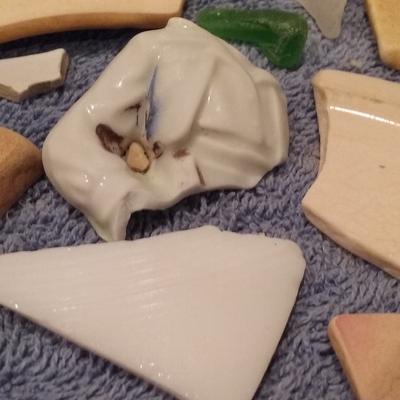
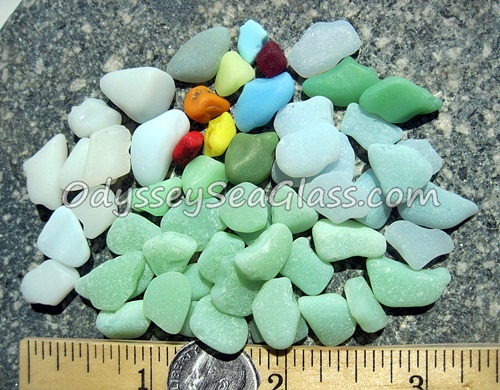

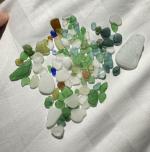

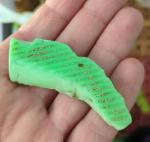
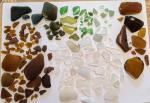
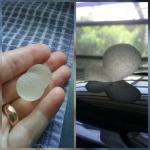


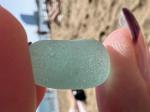
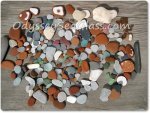
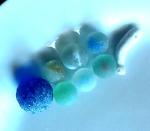
Comments!
We love receiving your comments, but please read the notes below before posting. Thank you!NOTES:
All comments are moderated. If you leave the page you won't see your comment until it is approved.
Select the "Post to Facebook" check box to be notified on FB when a reply has been posted.
If you scan the previous comments you may find an answer to your question. Click the "View X more" link at the bottom (if visible) to see all comments.
Photos - If you would like to include a photo, please use our Photo Forums.
Questions - If you have a question, it may already be answered. Please tap or click here to search of our site first.